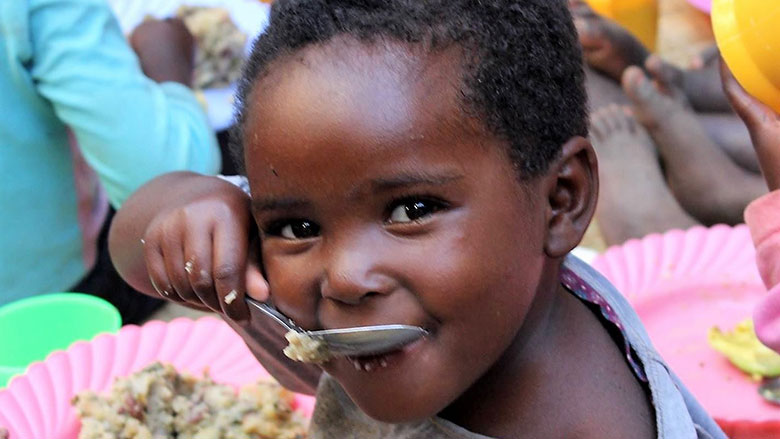KIGALI, June 21, 2018 – Although Rwanda has met or exceeded most of its development goals, chronic malnutrition, or stunting, remains a major challenge.
The recently released 12th edition of the Rwanda Economic Update, Tackling Stunting: An Unfinished Agenda, notes that while stunting rates have declined gradually since 2000—and at an accelerated pace since 2010—they remain stubbornly high at 38% (2014-2015).
“Stunting impedes cognitive development, educational attainment, and lifetime earnings,” said Yasser El-Gammal, World Bank country manager for Rwanda. “It also deprives the economy of quality human capital that is critical to attaining Rwanda’s aspiration to become a middle-income country and sustain its economic gains.”
While stunting is widespread, the report notes that rates are highest among the poorest households and those living in rural areas, with modest improvements in stunting since 2005. The average annual rate of reduction for 2005–15 was 2% among the poorest wealth quintile, in contrast to 5% in the richest quintile, the report says. Moreover, nearly 25% of children in the top two wealthiest quintiles also suffer from stunting.
The report further discusses progress on the underlying causes of stunting based on the UNICEF conceptual framework. Causes include lack of adequate quantity and quality of food, frequent illnesses, poor maternal and child care practices, substandard access to health services and unhealthy environmental shocks (e.g., drought, irregular rains, prolonged dry spells) that affects their ability to access food.
Rwanda’s government has placed stunting high on its priority list, to be addressed under the Sustainable Development Goals, and is taking measures to turn the tide on stunting by involving key stakeholders. Food security, nutrition and early childhood development are prioritized as foundational issues in the National Strategy for Transformation and Prosperity (2017-2024). The government has set a bold target for all districts to reach a 19% stunting rate by 2024, in line with the country’s 2018-2024 Health Strategic Plan. A National Early Childhood Development Coordination Program was recently established under the leadership of Prime Minister Édouard Ngirente to ensure high-level coordination.
In partnership with the World Bank, the Power of Nutrition, the Global Financing Facility and the Global Agriculture and Food Security Program, a multi-sectoral stunting reduction program was developed. The program encompasses three projects in nutrition, social protection and agriculture totalling $184 million.
The recently-launched Rwanda Stunting Prevention and Reduction Project will support community-based approaches, improve the delivery of high-impact nutrition and health interventions, incentivize frontline community health workers and health personnel, strengthen accountability mechanisms, and promote a learning-by-doing approach to draw lessons on what works and how it can be scaled up.
The Strengthening Social Protection Project will scale up the main components of the Vision 2020 Umurenge Program (VUP), including innovations such as a gender and child-sensitive public works scheme, a cash transfer support targeting poor households with pregnant women and children under two, and strengthened Civil Registration and Vital Statistics system, including birth registration. The Sustainable Agricultural Intensification for Improved Livelihoods, Food Security & Nutrition Project, which is in its final design stage, will support the increase in agricultural productivity, market access and food security in targeted project areas.
“This is one of the most ambitious stunting reduction programs that the World Bank has supported,” said Meera Shekar, World Bank global lead for nutrition.
To succeed in its ambitious plans to slash stunting rates, the Rwanda Economic Update makes several policy recommendations:
- Adopting a pro-poor approach, targeting the poorest children under two years of age during the critical 1,000-day window beyond which stunting is largely irreversible
- Mobilizing parents, mayors, and policymakers to strengthen ownership of the stunting reduction agenda
- Expanding domestic financing, better aligning resources to results, and improving tracking of all spending on stunting by all sectors
- Generating evidence about what works and how it can be scaled up
“Rwanda has a unique opportunity to create a positive virtuous cycle of producing a generation of well-nourished children who grow, thrive, and reach their full potential, contribute to human capital development, and contribute to future economic growth,” said Miriam Schneidman, World Bank lead health specialist and task team leader.

